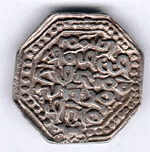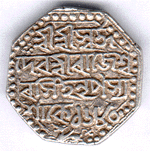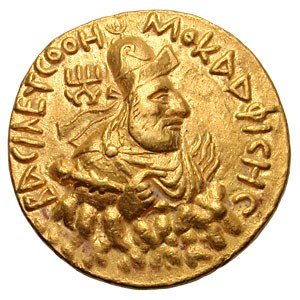Tripura was an independent Hindu kingdom occupying almost 10,400 square kilometers of hilly tract and a strip of fertile plains east of Bengal. Like Assam, this kingdom also remained largely secluded from neighboring Islamic influence. The existence of this kingdom is perhaps as old as history of eastern India. It came into prominence soon after Muslim rulers of Bengal lost their military strength. Tripura kings managed to acquire large tracts of land. Finally in 1733, powerful Mughal army defeated Tripura Maharaja (king) and occupied fertile plains, leaving him all hilly tract. After British took control of Bengal in 1871, a agent was appointed to help Maharaja in administration. Thus, this hill kingdom managed to remain independent till mid 20th century and finally in 1947 merged as one of the state in Indian republic.
Tripura coins are certainly special in Indian numismatics as most of them have names of their kings together with that of his queen. In 1464 AD, a young prince, Ratna Manikya with help of Rukn-ud-din Barbak Shah, a sultan of Bengal managed to gain full control over Tripura. He issued first coins of Tripura with fixed date of Saka era 1386 (1464 AD) which are certainly far superior to neighboring Bengal coinage. Even though Ratna Manikya minted coins in the identical weight standard of Bengal/ Mughal, they were entirely Hindu in their design and inspiration and definitely far better artistic specimen as compared to contemporary Bengal or Mughal coinage. Shown above is a fine example of Tripura coin minted by Ratna Manikya II which shows a lion (Vahana or vehicle of goddess Durga) on obverse and legends on reverse in Bengali script.


